This article describes how to quickly and easily manage your WordPress site using the WordPress Toolkit in cPanel.
The WordPress Toolkit provides a user-friendly and easy-to-use interface directly within cPanel that you can use to install, configure, and manage WordPress websites.
To install WordPress, please see this article.
Managing an existing WordPress site
To manage an existing WordPress site using the WordPress Toolkit, follow these steps:
- Log in to cPanel.
- In the DOMAINS section of the cPanel home screen, find and click WordPress Toolkit::
- For the Jupiter theme:

- For the Paper Lantern theme:

- For the Jupiter theme:
- When the WordPress Toolkit page appears, you will see a list of installed WordPress sites:
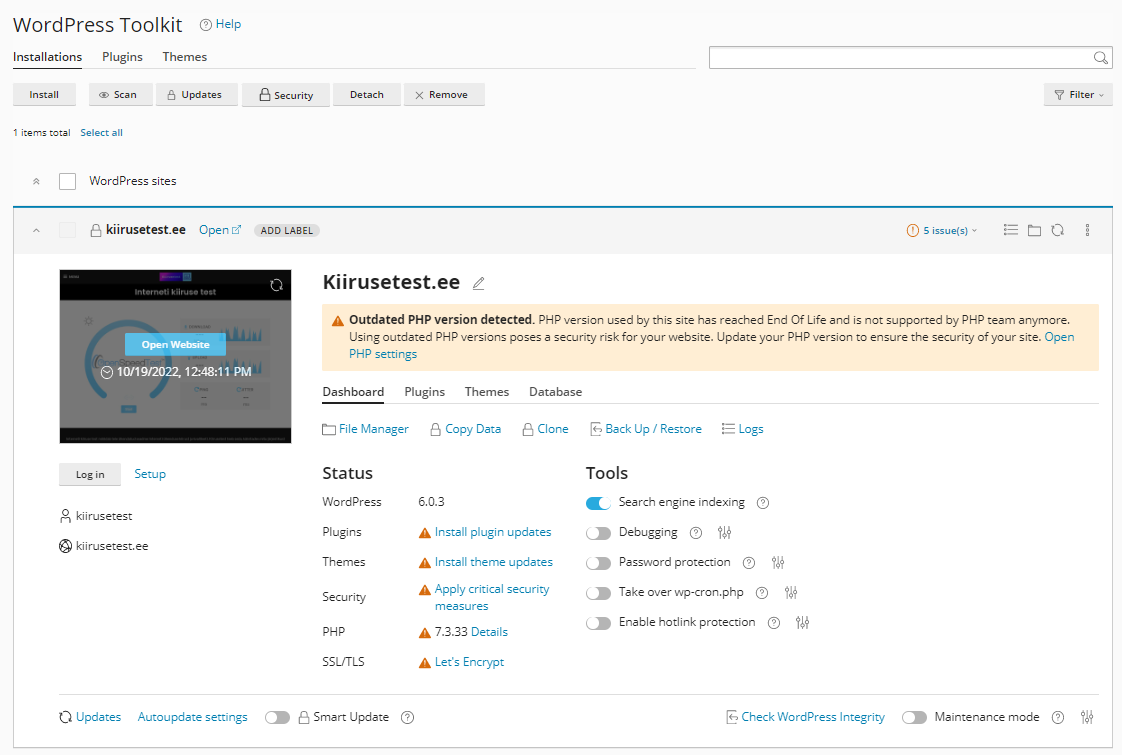
- Here are the options available for installed sites:
- Open used to view the site.
- Log in used to login to the site.
- Setup used to change site settings: the login URL, login password, site language, and administrator’s e-mail address.
- File Manager is used to view and manage the files for your site.
- Copy Data used to copy files from one WordPress installation to another.
- Logs used to view logs for the site.
- Maintenance mode slider is used to put the site in maintenance mode. If you want to customize maintenance mode settings, such as the maintenance message that is displayed to site visitors, click this icon
 .
. - Search engine indexing slider used to enable or disable search engine indexing.
Search engine indexing can be disabled if your site is still under development or for some other reason is not ready for public viewing.
- Debugging slider used to enable or disable WordPress debugging.
- Password protection slider used to enable or disable password protection.
If you enable this setting, all site visitors will be required to provide a username and password to access the site.
- Take over wp-cron.php slider used to enable or disable search engine indexing.
This option is used to disable the WordPress built-in pseudo-“cron” routine.
- Enable hotlink protection slider used to enable or disable hotlink protection.
Hotlink protection prevents other websites from displaying, linking, or embedding your images, and as a result, using your bandwidth.
Checking site security
To check your site’s security, and fix issues with WordPress Toolkit, follow these steps:
- Go to WordPress Toolkit main page, and click Check security in a site list entry, under Status. WordPress Toolkit begins scanning your site.
- After the scan is completed, WordPress Toolkit displays a list of issues found and suggested improvements:
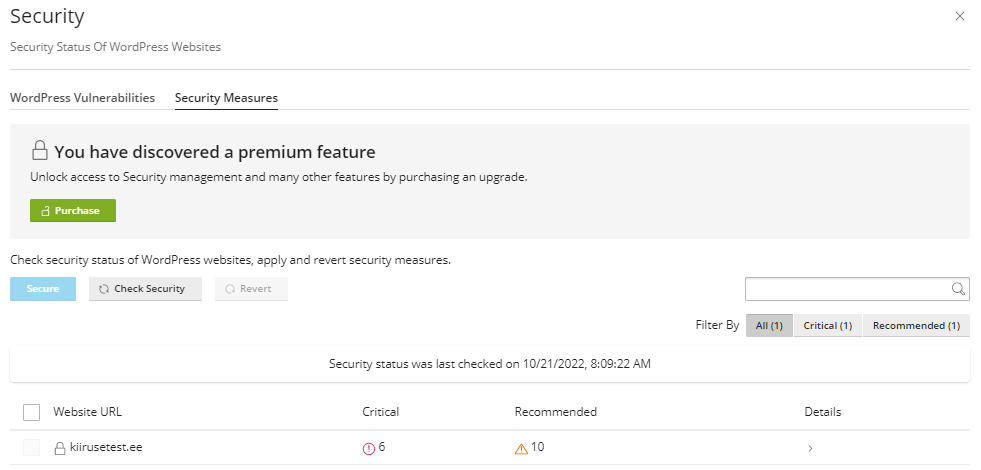
- Click Check WordPress integrity to check the integrity of WordPress application files, after that click Verify Checksums. WordPress Toolkit will check the files on your account against the reference checksums at wordpress.org to ensure that no files have been tampered with.
Updating WordPress
To update your website using WordPress Toolkit, follow these steps:
- Go to the WordPress Toolkit main page, and click Auto update settings. Select how you want to handle updates for WordPress core, plugins, and themes, and then click OK.
- Click Check updates and WordPress Toolkit check your website for available updates:

- When WordPress Toolkit finds any available updates, you need to review and select them, and after that click Update.
Cloning WordPress
To clone an existing WordPress installation, follow these steps:
- Go to the WordPress Toolkit main page, and click Clone.
- You can clone a site to a new subdomain, or use an existing domain or subdomain.
- To change the database name, type the new name in the Name text box.
- Click Start, and WordPress Toolkit begins cloning the site.
- When cloning is complete, click Close. Now you have an exact copy of your site.
Backing up and restoring WordPress
To back up and restore your site using WordPress Toolkit, follow these steps:
- Go to the WordPress Toolkit main page, and click Back Up / Restore.
- To generate a backup, click Back Up:
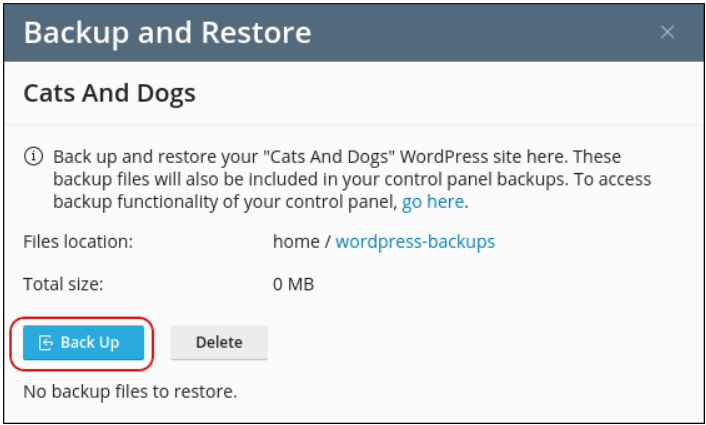
- If you created at least one backup, you can restore, download, or delete it:
- To restore a backup, click the restore icon:

- To download a backup, click the download icon:

- To delete a backup, click the delete icon:

- To restore a backup, click the restore icon:
Detaching WordPress
To remove (detach) a WordPress installation from WordPress Toolkit, follow these steps:
- Go to the WordPress Toolkit main page, click this icon
 , and then click Detach:
, and then click Detach: 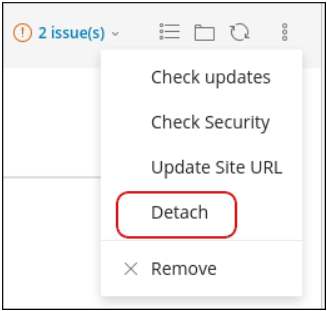
- Click Detach in the Detaching WordPress Websites dialog box to confirm, and the installation will be detached.
Deleting WordPress
To delete a WordPress installation altogether, follow these steps:
- Go to the WordPress Toolkit main page, click this icon
 , and then click Remove:
, and then click Remove: 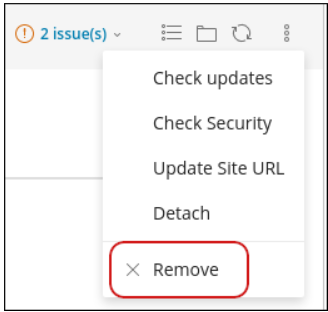
- Select the components you want to remove, and then click Yes.
More Information
- If you need more information about WordPress Toolkit, please visit https://www.cpanel.net/wp-toolkit.
- If you need more information about WordPress, please visit https://wordpress.org.
Looking for an outstanding cPanel-based web hosting provider? Try our web hosting packages with cPanel









